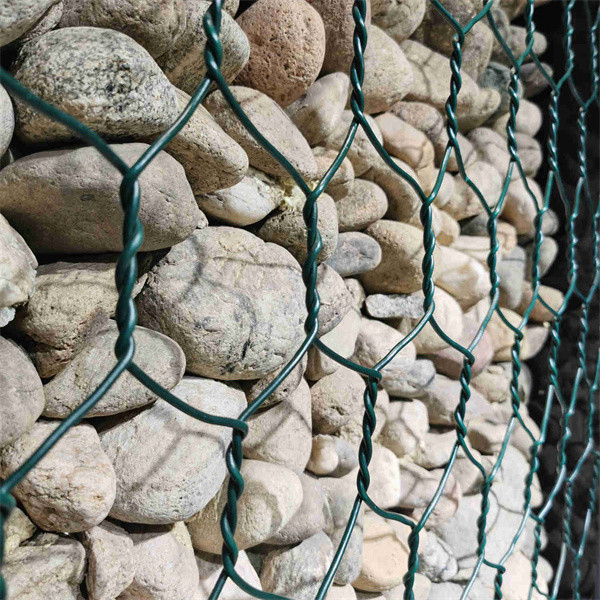Nov . 04, 2024 19:16 Back to list
Choosing the Right Rocks for Effective Gabion Basket Construction
Rocks for Gabion Baskets A Comprehensive Guide
Gabion baskets are increasingly popular in landscaping, erosion control, and architectural design. Created by filling wire mesh cages with stones, gabions provide both function and aesthetic appeal. They are widely used to control the flow of water, stabilize soil, and improve the visual context of surrounding environments. One of the critical elements that determine the effectiveness and appearance of a gabion is the type of rocks used to fill the baskets. This article will explore the options available for rocks used in gabion baskets, their benefits, and factors to consider when selecting the right materials.
Types of Rocks for Gabion Baskets
1. Natural Stone Natural stones are the most common choice for gabion filling. They can vary in size, shape, and color, allowing for creative designs. Common types of natural stone include granite, limestone, river rock, and basalt. Each type offers specific advantages—granite is extremely durable, while river rock provides a smooth texture and an appealing aesthetic.
2. Crushed Stone Crushed stone is often preferred for its angular shape, which interlocks well, enhancing stability. It typically comes in sizes ranging from ½ inch to 3 inches and is available in various types, including granite and limestone. Crushed stone can effectively drain water, making it an excellent choice for areas prone to erosion.
3. Recycled Concrete Using recycled concrete as rock filling is an eco-friendly option. It reduces waste and can be less expensive than traditional stone options. The material is usually crushed into manageable sizes and can significantly hold up against the elements. However, it may not match the aesthetic appeal of natural stone.
4. Pea Gravel Pea gravel is another alternative, consisting of small, rounded stones that create a softer look. Although it may be less stable when used alone due to its rounded shape, it can be a fantastic option when combined with other types of rocks in the gabion baskets. It's essential to consider the application and environment before opting for this type.
Benefits of Using Gabion Baskets
Erosion Control Gabion baskets are highly effective for preventing soil erosion along riverbeds, slopes, and hillsides. The stacked stones provide a barrier against water flow, while still allowing for drainage, thus reducing pressure on the soil.
rocks for gabion baskets

Aesthetic Appeal As mentioned, gabion baskets offer visual diversity. The variety of rocks allows for creative expression in landscaping. Whether aiming for a rustic look or a modern design, choosing the right stones can enhance the overall view of a property.
Cost-Effective Solutions Generally, gabion baskets are relatively easy and cost-effective to install compared to traditional retaining walls. The materials are often more affordable, and the labor required is typically reduced due to their simple design.
Environmental Benefits Gabion baskets are eco-friendly as they promote the growth of natural vegetation and can help filter sediment from water runoff. This encourages biodiversity and helps maintain the natural ecosystems in the area.
Factors to Consider
When selecting rocks for gabion baskets, several factors should be taken into account
- Size and Shape Ensure that the rocks are not too small or too large, as this affects the stability and drainage capabilities of the basket. - Durability Consider the environmental conditions—harsh weather or extreme temperatures can affect the longevity of certain stones. - Cost Assess the budget and balance aesthetic desires with financial practicality. - Local Availability Using locally sourced materials can often reduce transportation costs and support local industries.
Conclusion
Choosing the right rocks for gabion baskets is crucial for their efficacy, durability, and appearance. Whether opting for natural stone, crushed materials, or recycled concrete, understanding the available options and their benefits is vital to achieving the best results. With proper selection and installation, gabion baskets can serve functional purposes and enhance the aesthetic quality of any landscape.
-
The Role of Galvanized Gabion Mesh in Riverbank Protection
NewsJun.26,2025
-
The Role of Gabion Basket Raised Bed in Sustainable Gardening
NewsJun.26,2025
-
Quality Assurance of Wire Mesh Gabion Baskets
NewsJun.26,2025
-
Installation Guide for Welded Gabion Box
NewsJun.26,2025
-
How to Choose the Right Gabion Box
NewsJun.26,2025
-
Different Types of Gabion Wire Mesh
NewsJun.26,2025
-
Why PVC Coated Gabion Mattress Is the Best Solution for Long-Term Erosion Control
NewsMay.23,2025






